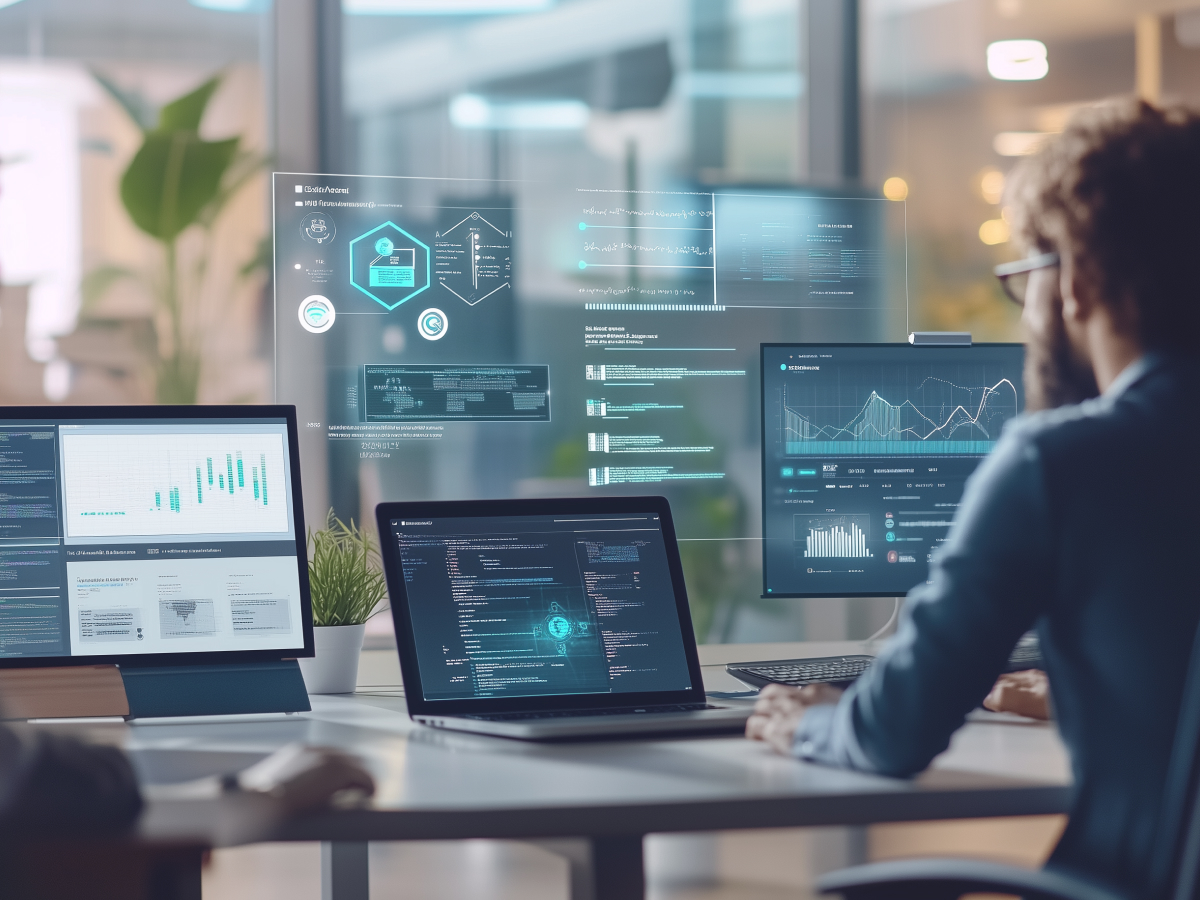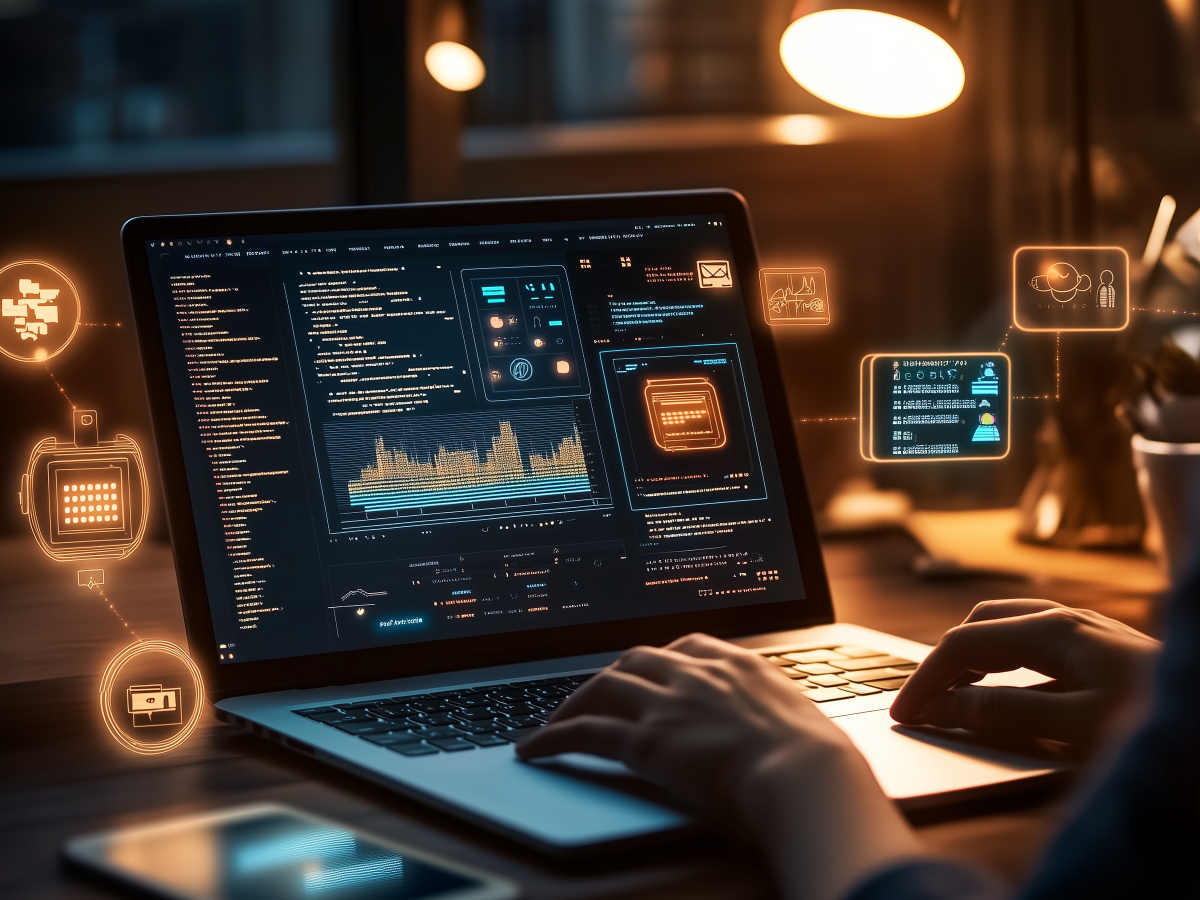The limits of growth and resource constraints
AI is moving fast, almost too fast. In 2024, we saw AI grow from a niche tool to a business necessity, driving efficiencies in everything from customer support to software development. It’s clear AI is here to stay, but the real question is: where does it go from here?
The challenge isn’t compute power or better algorithms, it’s data. AI systems learn by digesting vast amounts of human-created content, turning it into probability-driven responses. But data isn’t infinite. We’re approaching a point where AI is recycling its own outputs instead of learning from fresh, high-quality human knowledge. That’s like feeding an artist nothing but their past work, creativity plateaus.
Then there’s the environmental cost. AI processing isn’t free. Every AI-generated response requires energy, and surprisingly, water. Each text prompt can consume around 16 ounces of water, a hidden cost in large-scale AI deployments. AI will also need to justify its use cases. AI-powered washing machines? Probably not a game-changer. AI in gaming, software development, and automation? That’s where real value is being unlocked.
Yet, investment continues to pour in. One in four startups now claim to be AI companies, many using AI more as a marketing label than a real engineering advantage. Sound familiar? It should, it’s reminiscent of the dot-com boom, where everything was “online” until reality set in. The same shakeout is coming for AI. The companies that survive will be the ones solving real problems.
The growth of agentic AI
AI today mostly assists, it suggests, it recommends, it automates. But agentic AI is the next step. This is AI that doesn’t just give you answers; it takes action. Think of an AI that writes code, tests it, deploys updates, and continuously improves, all without human intervention. That’s where things are headed.
We’re already seeing early examples. Builder.io’s Micro Agent is one of the first “actually reliable” AI agents, capable of executing complex developer workflows. The implications are huge. Imagine AI running entire business functions autonomously, handling customer support, managing logistics, even optimizing financial strategies in real time.
But with autonomy comes risk. Self-driving cars were once promised as fully independent, yet human oversight remains key. The same applies to AI agents. When AI makes decisions with real-world impact, whether in finance, cybersecurity, or defense, who’s responsible when things go wrong? This is where regulation, governance, and corporate AI policies will become key.
There’s also the darker side: autonomous weapons. It wasn’t long ago that Google pulled out of military AI projects, and for good reason. AI doesn’t have ethics, it follows objectives. That’s fine when optimizing an ad campaign, but in warfare, unintended consequences can be catastrophic. The world is building AI agents faster than it’s answering these questions. That should make every business leader pay attention.
Quantum computing
Quantum computing has been a sci-fi concept for decades. But as we enter 2025, it’s becoming real and it’s going to change everything.
Google AI Labs recently announced they’ve crossed the error correction threshold, meaning they can now build quantum chips that improve as they scale. This is a big deal. Traditional computers hit limits when processing massive datasets or solving complex problems. Quantum computers, using the bizarre physics of superposition and entanglement, can do calculations in minutes that would take today’s best supercomputers millennia.
One of the biggest near-term shifts will be quantum networking, the ability to transmit data using entangled photons. Unlike classical data transmission, this could enable ultra-secure communication, potentially replacing traditional internet encryption. Early studies suggest existing fiber-optic cables could be adapted for quantum networking, meaning we might not need an entirely new infrastructure to roll it out.
This is both exciting and terrifying. Quantum computing has the potential to break most of today’s encryption methods, rendering current cybersecurity standards obsolete. Everything from financial transactions to national security depends on encryption, and quantum computers will be able to crack those protections. Fortunately, researchers are already working on post-quantum cryptography, making sure data security remains a step ahead.
Another wild possibility? The intersection of quantum computing and AI. Today’s AI is limited by classical computing constraints, but quantum-enhanced AI could process data at unimaginable speeds, unlocking innovations we haven’t even conceived. If there’s one area to watch, this is it.
Brain-computer interfaces
Brain-computer interfaces (BCIs) sound like something from a sci-fi movie, but they’re closer than you think. Companies are already developing implants that let people control computers with their thoughts. And the business world is paying attention.
Gartner predicts that, by 2025, BCIs could revolutionize hiring and workplace productivity. Imagine a job interview where instead of answering questions, your brain activity is analyzed in two minutes. Or an AI system that stimulates focus and relaxation on demand, turning workplace stress into peak productivity with a neural tweak. Sounds efficient, but also a little dystopian.
The big question is: where do we draw the line? If companies can analyze emotions and mental states, does that cross ethical boundaries? What happens to privacy when thoughts can be read or influenced? And who controls the data?
At a more fundamental level, BCIs are revealing new insights into how slow the human brain really is. A recent study on blind speedcubing (solving a Rubik’s cube without looking) found that while we have billions of neurons, our actual processing speed is much lower than digital communication speeds. That’s both humbling and an opportunity, improving brain-computer connections could unlock cognitive improvements we’ve only dreamed of.
Blockchain’s expansion
Blockchain went through its crash, but it’s not dead, it’s evolving. The crypto market had its “winter of discontent”, but behind the scenes, blockchain is quietly integrating into mainstream finance.
We’re moving toward a hybrid finance model, combining the best of decentralized finance (DeFi) and traditional finance (TradFi). The goal? Keep blockchain’s efficiency and transparency while adding regulatory oversight and security. When that transition is complete, DeFi and TradFi won’t be separate things anymore. It’ll just be “finance.”
At the same time, AI and blockchain are merging. Venture firms like Andreessen Horowitz are backing crypto projects that integrate AI to optimize trading and asset management. AI-driven trading strategies are nothing new, but combining them with blockchain’s transparency could create an entirely new market dynamic.
Another shift is the rise of self-executing smart contracts, which could replace traditional legal agreements in everything from real estate to corporate mergers. Instead of hiring lawyers, businesses could use code-enforced agreements that execute automatically when conditions are met. Faster, cheaper, and far less paperwork.
“The market is still sorting out the winners and losers, but one thing is clear: blockchain isn’t going away. It’s just moving from speculation to real-world utility.”
Are we nearing the singularity?
Every major breakthrough, AI, quantum computing, BCIs, blockchain, is accelerating at the same time. It’s easy to look at these trends and think we’re on the verge of a technological singularity, the point where AI surpasses human intelligence and takes over.
Let’s be real: we’re not there yet. The singularity assumes that consciousness and intelligence are just computational problems. That’s an oversimplification. AI is powerful, but it’s not self-aware. It doesn’t have independent will or emotions. It’s just really good at predicting patterns based on data.
What’s actually happening is something just as interesting: the convergence of multiple exponential technologies. AI, quantum computing, and BCIs are all maturing at once. This won’t lead to a singularity, but it will create breakthroughs that change industries faster than ever before.
The next five years won’t be about machines taking over, it’ll be about humans and AI working together in ways we’ve never seen. And that, in itself, is a revolution.
Key takeaways
- Emerging AI challenges: AI is advancing rapidly, yet decision-makers must recognize its growing limitations due to data saturation and resource constraints. Leaders should assess investments in sustainable AI solutions that balance innovation with environmental and operational costs.
- Agentic AI and autonomy: The shift toward autonomous, self-iterating AI presents both transformative opportunities and significant ethical challenges. Executives should prioritize developing robust governance frameworks to ensure accountability and mitigate risks in automated decision-making.
- Quantum computing readiness: Quantum computing is transitioning from theory to practical application, promising to revolutionize data processing and cybersecurity. Organizations should invest in quantum-readiness strategies, including R&D and post-quantum cryptography, to safeguard their digital assets.
- Integrated tech ecosystems: Breakthroughs in BCIs and blockchain signal a move towards highly interconnected technology ecosystems that redefine human-machine interaction and financial operations. Leaders must explore pilot projects to harness these technologies for improved productivity and streamlined operations.





